On August 10, 2021, the Ministry of Industry and Information Technology released the "Catalogue of Recommended Models for the Promotion and Application of New Energy Vehicles" (the seventh batch of 2021, hereinafter referred to as the catalog). The seventh batch of catalogues released since the implementation of the new energy vehicle subsidy policy in 2021.
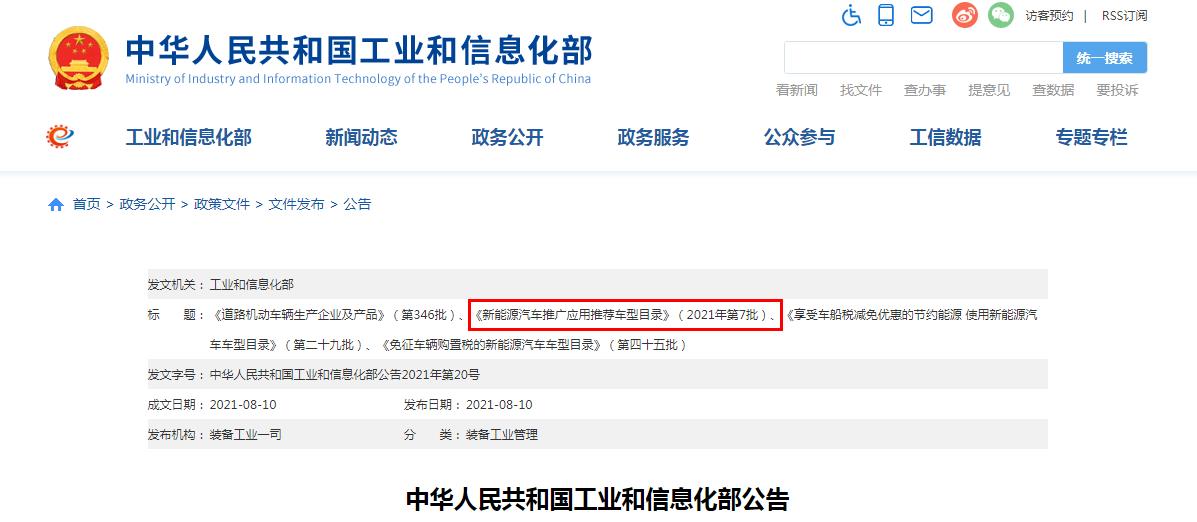
In this batch of catalogues, a total of 227 new energy vehicle models from 87 auto companies are on the list, including 47 new energy buses, 66 new energy passenger vehicles and 114 new energy special vehicles. It can be seen that new energy special vehicles are the most listed models in this batch of catalogs, occupying 50.22% of the market share of the number of new energy vehicles listed in this batch; the number of new energy special vehicles listed in this batch of new energy vehicles is the previous one The 89 models on the list increased by 28.09%. Among the 114 new energy special vehicle models on the list in this batch, the number of heavy-duty trucks on the list reached 18, a 200% increase from the previous month (the sixth batch only included 6 models). The biggest highlight is this The 18 power-swapping heavy trucks on the list cover power-swapping tractors (5 models on the list, accounting for 27.78%), the power-swap dump truck market (4 models on the list, accounting for 22.2%), and power-swapping sanitation vehicles (4 types of electric dump trucks on the list, accounting for 22.2%), electric mixer trucks (3 types on the list, accounting for 16.67%), electric logistics vehicles (electric vans on the list) The second model in the list, accounting for 11.11%) and other five major target markets, and the 6 replacement heavy trucks on the 6th batch are all single market replacement tractors, indicating that in this batch of catalogues, the replacement heavy trucks have all been completed at the same time Fangwei has entered the five major segmented target markets for heavy trucks, which has never been seen in any batch of new energy special vehicle catalogs in the past. It indicates that the replacement of heavy trucks will fully blossom in all market segments. In other words, in the field of new energy heavy trucks, a stage of comprehensive promotion and application and comprehensive development of replacement heavy trucks has come (the following 6 screenshots show the 18 replacement heavy trucks listed in the 7th batch of new energy vehicle recommended catalogues in 2021. The car models in the market segment and their listed manufacturers and number).
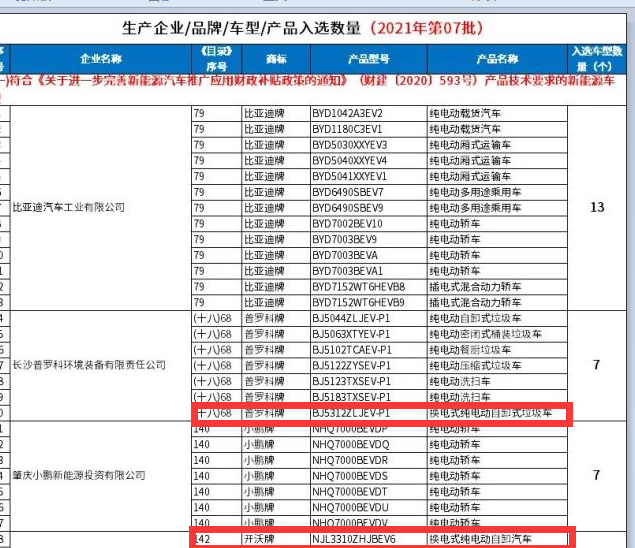
(Screenshot 1)
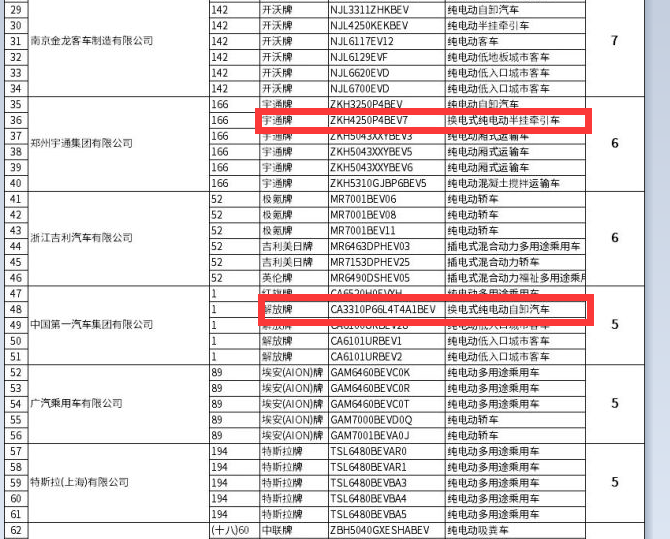
(Screenshot 2)
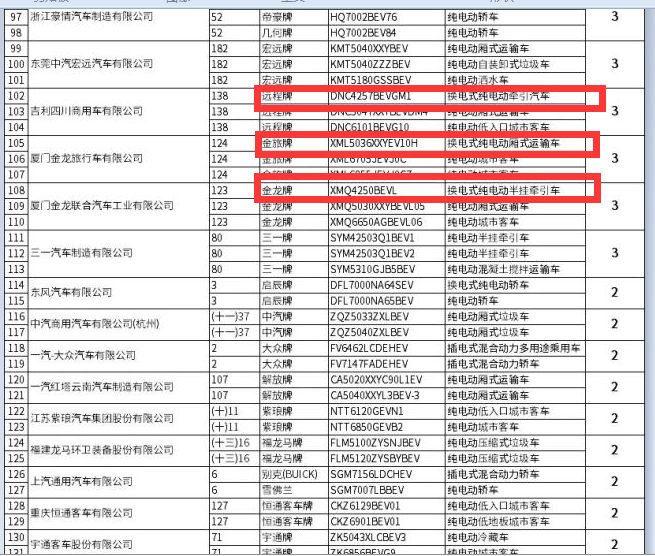
(Screenshot 3)
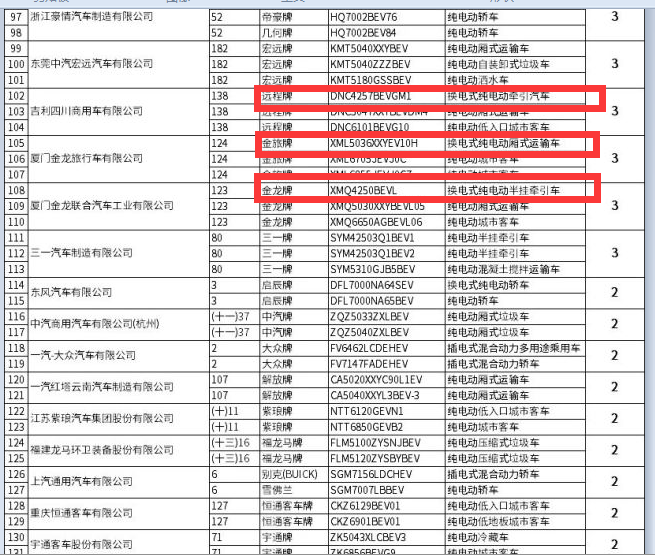
(Screenshot 4)
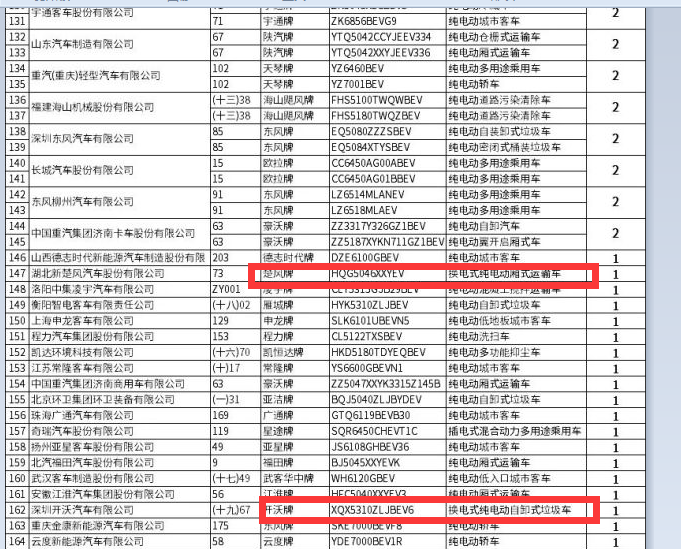
(Screenshot 5)
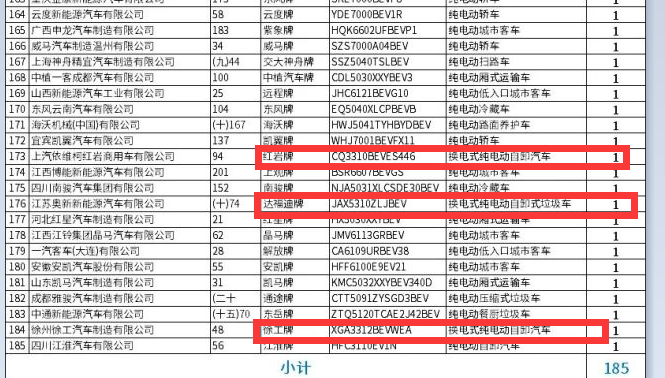
(Screenshot 6) Among the 18 power-swapping heavy trucks listed in this batch of catalogs, power-swapping tractors, power-swapping dump trucks, power-swap dump trucks, power-swapping mixer trucks, power-swapping tanks Comparison of the number and proportion of trucks on the list with the sixth batch of catalogs:
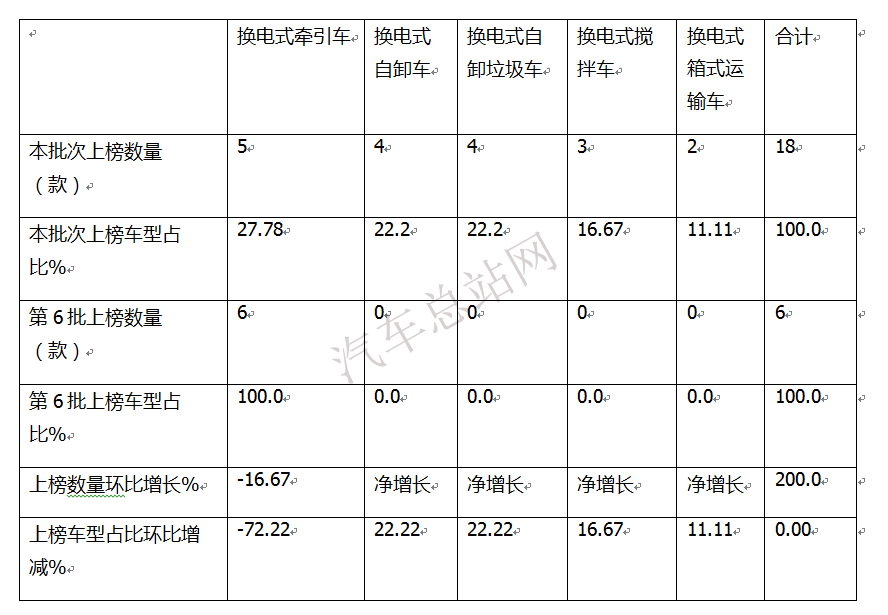
Table 1 Explanation of Table 1: 1. There are 18 types of heavy-duty trucks listed in this batch of catalogues, which is a 200% increase from the 6th batch of 6 models on the list, indicating that car companies are very active in applying for heavy-duty trucks. High, the number of declarations is rising sharply; 2. The target market for heavy-duty trucks listed in this batch catalog covers tractors, dump trucks, sanitation trucks (dumping garbage trucks), mixer trucks, and logistics trucks (box transport trucks). ) Five major target markets, and the sixth batch of 6 swappable heavy trucks on the list are all for a single tractor market, indicating that automakers have focused on various subdivisions in the declaration of swappable heavy trucks, covering almost all areas of heavy trucks. Market segmentation indicates that in the field of new energy heavy trucks in the future, swappable heavy trucks may penetrate and develop into various market segments. Why are the replacement heavy trucks listed in this batch catalogue not only soaring in number, but also covering the target market in all directions? The main reasons are as follows: First, heavy trucks are currently polluting emissions in my country's automobile industry Under the pressure of dual-carbon targets and emission reduction tasks, the vehicles with the largest volume should reduce the emissions of heavy-duty trucks in various market segments in an all-round way, instead of reducing only the pollution emissions of models in a certain heavy-duty truck segment. Otherwise, There is a serious partial discipline phenomenon, which fails to achieve the goal and effect of emission reduction. Public data shows that the current pollutant emissions from heavy-duty fuel trucks account for nearly 60% of the total pollutant emissions from commercial vehicles, making it the current polluter of fuel-fueled vehicles in my country. The pollution is not a certain subdivision of heavy trucks, but tractors, dump trucks, mixers, trucks (logistics vehicles), sanitation trucks, etc., which include fuel heavy trucks. It is precisely because of these different details. A large number of excessive emissions of fuel heavy trucks operating in different markets have led to the current situation of high pollution emissions in the heavy truck industry. Therefore, fuel heavy trucks in these fields must be gradually transformed into new energy sources in order to gradually reduce the pollution of fuel heavy trucks. Emissions. The second is that replacing heavy-duty trucks is one of the effective ways to quickly promote the electrification of heavy-duty trucks. At present, the main technical route of new energy for heavy trucks is electrification, and there are currently two main modes of electrification, namely ordinary charging and battery swapping. The ordinary charging mode is too slow, and the efficiency is too low (fast charging takes nearly 2 hours, and it is easy to damage the battery, slow charging takes more than 10 hours), which can not meet the attribute demand of heavy trucks as a profitable production material. The charging efficiency of the battery swap mode is much higher than that of the ordinary charging mode. It is reported that the battery swap can be completed in 5 minutes under normal circumstances, which is almost the same as the refueling time. This can fully cater to the needs of heavy truck customers for efficient operation and fast making money. Therefore, as a battery replacement mode, it will become a better entry point for the electrification of heavy trucks. In addition, in the normally closed transportation environment, replacing heavy-duty electric trucks can also solve the cruising range problem that ordinary electric heavy-duty trucks cannot solve. Therefore, the replacement of heavy-duty trucks has high power supplement efficiency and can solve the cruising range problem; at the same time, the replacement of heavy-duty trucks can also realize the business model of vehicle electricity classification (batteries can be leased), which can also reduce the pressure on the cost of car purchase by end customers. This makes most heavy-duty truck terminal users more acceptable to switch to heavy-duty trucks. Third, the country is currently actively advocating the development of new energy vehicles, especially new energy heavy trucks. In the past, the Ministry of Industry and Information Technology and other relevant authorities have repeatedly expressed their need to vigorously support the development of swappable heavy trucks. In particular, the Politburo meeting on July 30, 2021 emphasized the need to support the accelerated development of new energy vehicles, reflecting the high level of the central government’s attention to the current development of new energy vehicles in my country, and explaining that in the future, not only should the development of new energy vehicles be maintained, but also the development of new energy vehicles. The pace must be greater and the speed must be faster!
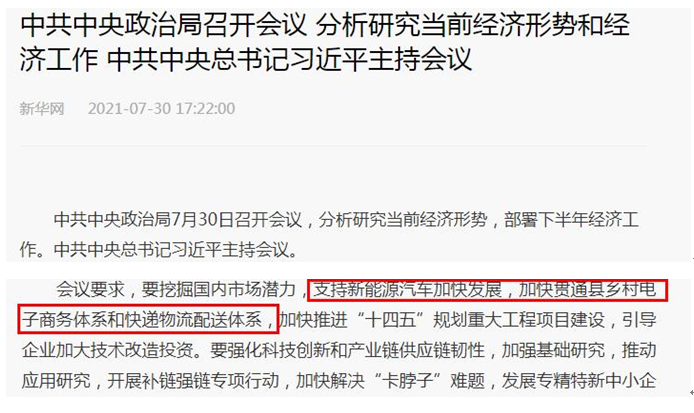
Specifically related to the commercial vehicle industry, it is necessary to focus on promoting the new energy of heavy trucks with the most serious pollution emissions, and to accelerate the pace of development of new energy heavy trucks. In other words, new energy heavy trucks may be listed as the focus of the commercial vehicle industry in the second half of this year. From a policy perspective, in order to implement the call of the Political Bureau of the Central Committee, relevant national authorities may have a package of policies favorable to the development of new energy commercial vehicles in the second half of the year. This means a new round of development opportunities for the commercial vehicle industry. With the approaching approach, various car companies have made thorough national policy studies and have understood the country’s strategic determination to focus on the development of new energy heavy trucks. Therefore, car companies are actively expanding the use of swappable heavy trucks in tractors, dump trucks, mixers, sanitation trucks and logistics. The promotion and application of automobiles and other market segments is actually taking advantage of the trend. Fourth, the current traditional heavy-duty truck market has been severely overdrafted due to the early advancement of the previous stage, and the switch of the National VI will make the trend of the traditional heavy-duty truck market in the next few months in the second half of this year will not be too optimistic. Automakers want to get rid of the market difficulties. , Always look for a market starter, and the replacement of heavy trucks is one of the starters in this market. Fifth, the demand for heavy-duty truck replacement in the terminal market is increasing. It is reported that in the context of the dual-carbon target, many resource-based cities with serious pollution currently require the acceleration of the promotion and application of new energy heavy trucks, especially some large state-owned power plants, steel plants, mines and ports and other target customers have purchase replacements. The plan for electric heavy trucks involves tractors, dump trucks, mixer trucks, sanitation trucks, logistics vehicles, etc. Therefore, the market prospects for the next step of replacing electric heavy trucks are relatively broad. For example, the Office of the Leading Group for Air Pollution Prevention and Control in Tangshan City recently issued a notice on soliciting opinions on the "Tangshan City 2022 Beijing Winter Olympics and Winter Paralympic Air Quality Assurance Implementation Plan" (hereinafter referred to as the "Opinion Draft"). The transportation vehicles preparing for the Winter Olympics will all adopt new energy vehicles or vehicles that meet the National VI emission standards, and the transportation of heavy trucks of National V and below shall be prohibited. The time period is from the date of the release of the plan to March 13, 2022, which undoubtedly needs to be replaced. Heavy trucks provide market opportunities. In short, the biggest highlight of this batch of new energy special vehicle recommended catalog is that not only the number of replacement heavy trucks on the list has risen (200%), but it is also worth noting that the models on the list are more comprehensive, including the full introduction of tractors. 18 models in five target markets, dump trucks, mixer trucks, sanitation trucks, and logistics trucks. This has never been seen in any of the previous recommended catalogs of new energy special vehicles. This indicates that the replacement heavy truck market or It will usher in all-round development.
















 RCCN WeChat QrCode
RCCN WeChat QrCode Mobile WebSite
Mobile WebSite